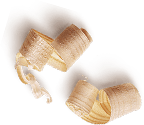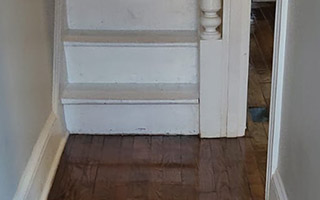
Full Floor Sanding vs. Buff and Recoating: Which Option Is Right for Your Hardwood Floors?

Do your hardwood floors look worn but not in need of a full makeover? It's no secret that hardwood floors are prone to scratches from daily wear and tear. If you have noticed fading or light scratched, you might be wondering whether to go for a full sanding or just buff and recoat. Learn about the key differences between these two methods to help you decide which one is the best fit for your floors and budget.
What's the Difference Between Full Floor Sanding and Buff & Recoat?
Full floor sanding is a complete makeover for your hardwood floors. It's a process where the top layer of your floor is sanded down to remove all the wear and tear, revealing fresh, smooth wood underneath. Once the sanding is done, a new protective finish is applied to seal the wood and give it a fresh, polished look. This option is perfect when your floors are showing serious signs of damage, or if they just need a fresh start to bring back their original beauty. Buffing and recoating is a quicker and less invasive way to give your hardwood floors a fresh look. Instead of sanding down to the bare wood, the surface of the floor is lightly buffed to remove any scuffs, dirt, or old worn-out finish. This helps smooth out minor imperfections, like light scratches or fading. Once the buffing is done, a fresh layer of finish is applied to protect the wood and give it a shiny new coat. It is a good option if your floors are in decent shape but just need a little touch up to restore their luster.
Sanding Vs Buffing & Recoat
Full Sanding
Buff and Recoat
Cost of Buffing and Recoating Hardwood Flooring
There are a number of factors that can affect the cost of buffing and recoating your hardwood flooring including:
- Size of Area: The larger the room, the more expensive the service will cost. As the price to buff and coat is based on per square foot. However, around 80% of the total cost is from labor. Additionally, if you have a tricker room layout, this will also cost more.
- Condition of the Floors: If your floors have only minor wear, scratches, and fading, buffing and recoating will be much cheaper than if the floors have heavier damage, as this might require more time and work.
- Type of Hardwood: Some times of hardwood require special care and attention.
- Pine- Pine flooring costs more to refinish due to being a soft and delicate wood that can easily sustain dents and scratches. So the technician will need to take additional care.
- Maple-Maple is a durable type of food, so it will require more time and effort to buff and coat it
- Mahogany- Mahogany requires more time to prepare in order to avoid damaging its darker color.
Cost of Sanding Hardwood Floors
The cost of sanding a hardwood floor can vary based on several factors, including the size of the area to be sanded, the condition of the floors, and the type of wood.
Unsure whether your floor needs a full sanding or a buff and recoat? Contact Hardwood Revival on 888-647-2123 today for a free no obligation consultation! Our professional technician will assess your floors and recommend the best option based on your needs and budget. Whether you are looking for a quick refresh or a full transformation, we are here to help!
Frequently Asked Questions
Can I Walk On the Floors Immediately After Buffing/Sanding?
Buff and Recoat: After buffing and recoating, you can usually walk on the floors after 24 hours. However, avoid heavy foot traffic for 48 hours to allow the finish to fully cure.
Sanding: After sanding, the floors must be finished and cured. You should wait at least 24 to 48 hours before walking on newly finished floors. Avoid heavy foot traffic for 3 to 5 days until the finish fully cures.
How Long Does a Buff and Recoat Last?
A buff and recoat typically lasts 1 to 3 years, depending on factors such as the level of foot traffic, the type of finish applied, and how well the floors are maintained. It's a less invasive process than sanding, so it's suitable for lightly worn floors.
How Long Does Sanding Hardwood Floors Last?
The results of sanding and refinishing can last 7 to 10 years, but it depends on factors like traffic, maintenance, and whether additional coats of finish are applied over time. With regular maintenance, you can extend the lifespan of a sanded floor. Sanding is a more extensive process than buffing, and it restores the floors to their original condition, which can significantly prolong their lifespan.

